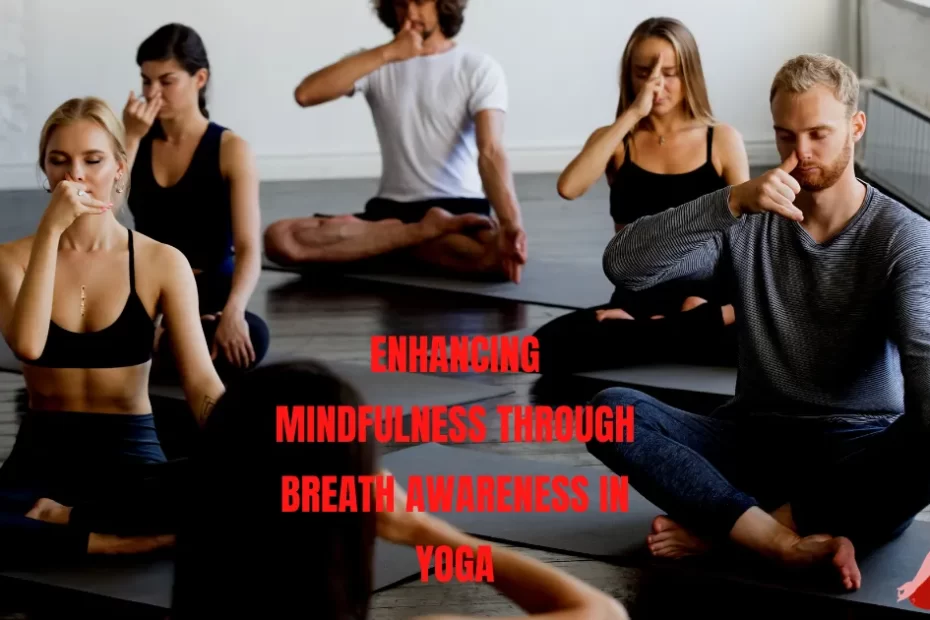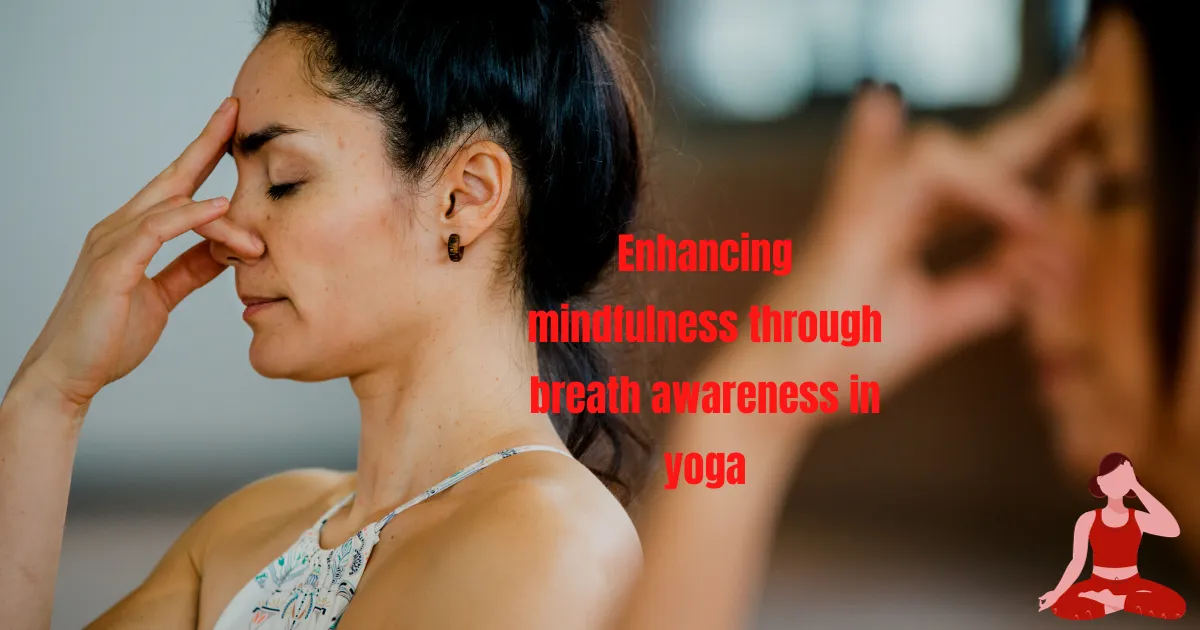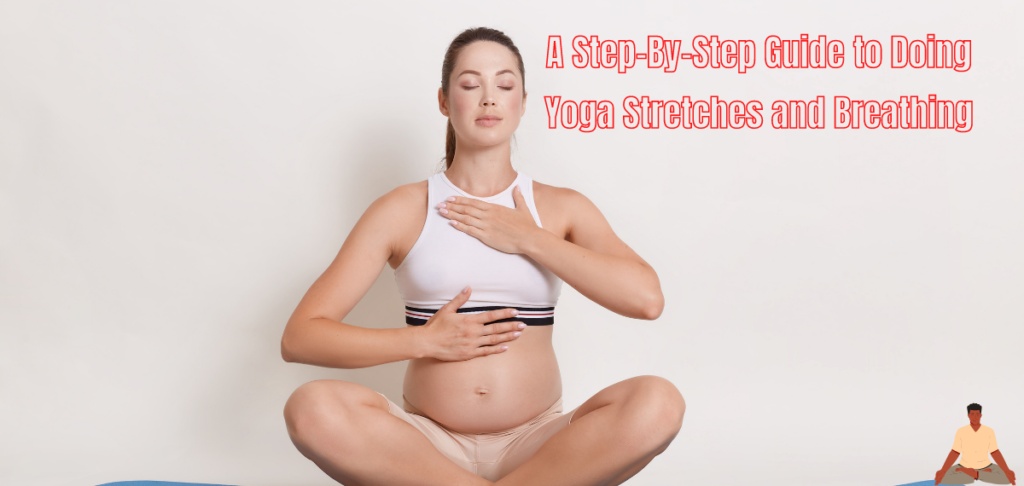Breath In Yoga: Proper breathing and stretching techniques are essential components of a fulfilling yoga practice. They enhance the overall experience and provide numerous physical and mental benefits. In this guide, we’ll explore the significance of breath control and stretching in yoga and delve into specific techniques and exercises for intermediate practitioners.
The Significance of Breath Control in Yoga:
Breath control, known as pranayama, is fundamental to yoga practice. It helps increase awareness, focus, and energy within the body. Proper breathing techniques oxygenate the blood, promote relaxation, and calm the mind. You can create a harmonious flow in your practice by synchronizing breath with movement.
Different Breathing Techniques:
Ujjayi Breath is the “oceanic” or “victorious” breath. Inhale deeply through your nose, slightly constricting the back of your throat to create a soft hissing sound—Exhale with the same constriction. Ujjayi breath warms the body and promotes concentration.
Kapalabhati Breath: Also known as the “skull-shining” breath, Kapalabhati involves forceful exhalations through the nose while keeping the inhales passive. It energizes the body and clears the mind.
Nadi Shodhana Pranayama: This alternate-nostril breathing technique balances the left and right sides of the brain. Close your right nostril with your thumb, inhale through the left nostril, then close the left nostril with your ring finger and exhale through the right. Repeat this pattern.
Synchronizing Breath with Movement:
In yoga poses, breath and movement are intertwined. For instance, in a Sun Salutation, you inhale, raise your arms overhead, and exhale as you fold. Syncing breath with movement enhances flexibility, balance, and flow, allowing you to dive deeper into each pose.
Find a comfortable spot: It is important to find a comfortable space to practice yoga in order to truly get the benefits from it. Look for one that is not too hot or cold and be sure to place your mat or other materials on a flat surface. Reduce external noise and distractions as much as possible.
Warm up your body: Gently warm up your muscles with basic exercises such as shoulder rolls, side bends, chair twists, ankle circles etc. This will prepare you specifically for stretching and also increase circulation throughout the body before getting into deeper poses.
Start with breathing techniques: Start by consciously slowing down your breath and counting slowly in sets of 4 (inhale 1-2-3-4, exhale 1-2-3-4). As you begin to become more familiar with this type of breathing and its powerful effects, try some pranayama exercises such as alternate nostril breathing or even kapalabhati and ujjayi pranayama (breathing in yoga).
Focus on different muscle groups: While doing these stretches focus on different muscle groups within the body from head to toe — neck, shoulders, back, chest, abdomen/core, legs etc.). Take your time over each area and hold each stretch for around 10 seconds or a few deep breaths depending on what feels comfortable for you mentally and physically at any given time.
Use props: Props such as blocks can really help enhance stability when performing yoga postures so that we can fully embody each pose without compromising alignment or adding stress simply due to lack of flexibility or experience with the pose itself.
Create balance between intensity levels & relaxation: Alternate between dynamic stretching movements while integrating moments of rest – go inward and move slowly - just take a break! Taking this kind of approach provides an increased level of awareness while allowing us greater access into our bodies proprioception system and sense of physical intuitive beingness in our inner world too when done with mindful intent & diligence -- vital shadows required for sustainable long term growth in any Yoga practice!
Cool down & integrate changes: Once you’ve completed all the stretches spend 5+ minutes lying still perhaps focusing solely on following your breath whilst feeling any sensations (spaces/shifts) that may have been created from doing your practice beforehand...Savasana (corpse pose) is an excellent way also to let everything settle; considering how best we can use what has changed within & take it forward into our day harmoniously!
Utilize Proper Breathing Techniques (breathing in yoga)
Proper breathing plays a critical role in your yoga practice. It helps to relax and further concentration. While doing each pose, focus on slow, even breaths as you move into the posture and then hold it for several seconds. Inhale on your way into a pose, exhale when holding the posture, and then inhale again as you transition out.
Direct your breath through your mouth or nose, depending on the instructions given by your instructor. Focusing on counting breaths is often beneficial because it can keep you in the present moment and open up space for peaceful reflection.
Q&A About Yoga Breathing Exercises And Techniques For Managing Anxiety:
What is yoga breathing?
- A: Yoga breathing, also known as pranayama, is the practice of controlling the breath, the source of our prana, or vital life force. It involves various techniques designed to improve breathing and influence the flow of prana in the body.
How can yoga breathing help reduce anxiety?
- A: Yoga breathing techniques can help calm the mind, reduce stress, and lower the body’s response to anxiety by regulating the nervous system. They shift the balance from the sympathetic nervous system (fight-or-flight response) to the parasympathetic system (rest and digest), promoting relaxation.
What is diaphragmatic breathing, and how is it performed?
- A: Diaphragmatic breathing, or deep belly breathing, involves breathing deeply into the diaphragm rather than shallow breathing into the chest. To perform it, sit or lie down comfortably, place one hand on your belly, inhale deeply through the nose, allowing your belly to rise more than your chest, and exhale slowly.
Can you describe the “4-7-8” breathing technique?
- A: The “4-7-8” technique involves inhaling through the nose for 4 seconds, holding the breath for 7 seconds, and exhaling through the mouth for 8 seconds. This method reduces anxiety by increasing oxygen in the bloodstream and promoting relaxation.
What is the benefit of alternate nostril breathing for anxiety?
- A: Alternate nostril breathing, or Nadi Shodhana, helps harmonize the left and right hemispheres of the brain, resulting in physical, mental, and emotional well-being. It’s particularly effective in calming the mind, reducing anxiety, and promoting an overall tranquil state.
How does the “Bee Breath” technique (Bhramari) help with anxiety?
- A: Bhramari, or Bee Breath, involves making a humming sound during exhalation, which can have a soothing effect on the mind. The vibration helps calm and soothe the nervous system, reducing stress and anxiety.
Is there a specific time of day best for practicing yoga breathing for anxiety?
- A: Yoga breathing can be beneficial anytime, but practicing it in the morning can help set a calm tone for the day ahead. Additionally, using these techniques before bedtime can help manage anxious thoughts and promote restful sleep.
Are there any risks associated with yoga breathing techniques?
- A: While yoga breathing is generally safe, practicing advanced techniques without proper guidance can lead to dizziness or lightheadedness. Beginners need to start with the guidance of an experienced teacher.
How long should I practice yoga breathing to reduce anxiety?
- A: A few minutes (5-10 minutes) of yoga breathing can relieve anxiety. Regular practice can also help build resilience against stress and improve overall emotional regulation.
Can yoga breathing be combined with other forms of yoga or meditation for better anxiety relief?
- A: Absolutely! Combining yoga breathing with meditation or physical yoga postures can enhance the benefits and provide a more holistic approach to managing anxiety. Integrating these practices helps create a more profound sense of balance and peace.
Yoga For Couples: To Strengthen Both Physical And Emotional Connections While Managing Anxiety
Here are some couple-friendly yoga breathing exercises that specifically target anxiety reduction, fostering relaxation, and enhancing mutual support
Share this:
- Click to share on Facebook (Opens in new window) Facebook
- Click to share on Pinterest (Opens in new window) Pinterest
- Click to share on LinkedIn (Opens in new window) LinkedIn
- Click to share on X (Opens in new window) X
- Click to share on Tumblr (Opens in new window) Tumblr
- Click to share on Bluesky (Opens in new window) Bluesky


